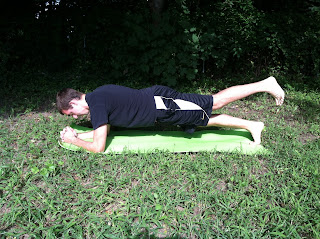1) Foam rolling the IT band is a great way to loosen up the tightness and break up scar tissue around the area. You want to roll the entire length of leg, from hip to knee (never roll of joints or bones!).
2) IT band issues come from weak hip abductors and adductors. Doing exercises such as lying leg raises will help strengthen those areas.
a. Side leg raises: Lie on your side with the upper leg straight and the lower leg bent at the knee. Place your hands on the floor for support. Slowly lift the upper leg, leading with the heel, and reach to as high as you can. Lower the leg down. Do 2-3 sets of 10-15, repeating on each leg.

3) You also want to strengthen the glutes and the external hip rotators if you have IT band troubles. A great exercise is single leg squats. Do these in front of a mirror to make sure you are using proper form. Stand on one leg with the foot pointing straight ahead and the knee slightly bent. Keep your weight centered on the ball of your foot, upper body straight, and head facing forward. Lower into a squat position, keeping the knee centered. Do 2-3 sets of 10 repeating on each leg.
Always remember to keep good posture and never rush through all the exercises!












